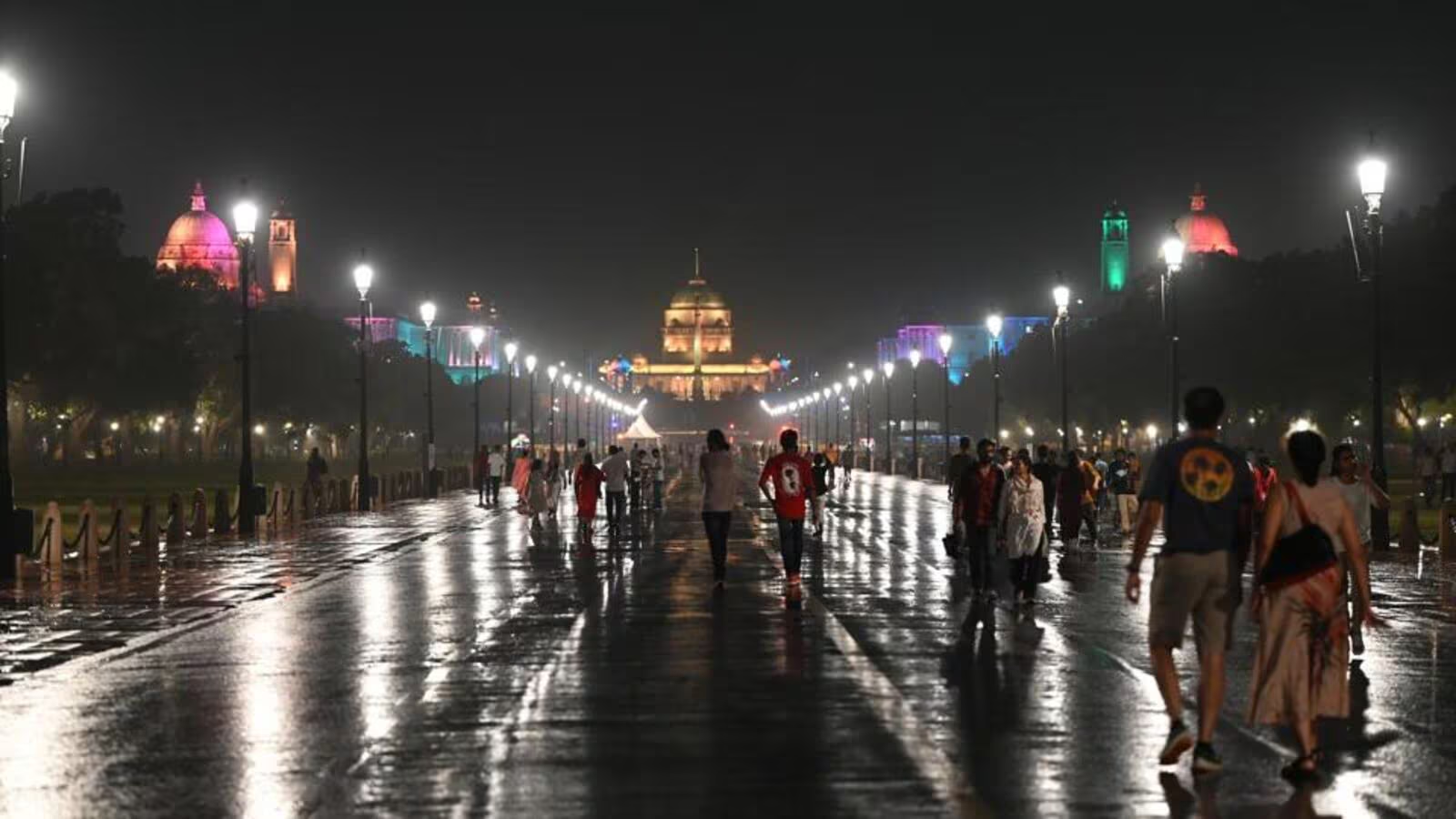Light rains lower Delhi’s temperature; the AQI rises: Another period of light rain and strong winds is expected to affect the city during the day on Thursday, according to the IMD.
light rains lower Delhi’s temperature; the AQI rises: Following several days of intense warmth, the temperatures in Delhi have dropped due to a period of gusty winds and sporadic rain since Wednesday night, according to the India Meteorological Department (IMD).
A day before, Delhi saw the warmest July night in at least fifty-five years.
Safdarjung recorded a minimum temperature of 29.6°C, two degrees above normal, due to an approaching western disturbance that caused a sharp drop in temperature. Light rainfall was observed in some areas late on Wednesday and early on Thursday, and gusty winds of up to 52 km/h were recorded throughout the national capital.
According to the IMD, Wednesday’s minimum temperature of 35.2°C made it the warmest night for Delhi ever throughout any month from 1969 to 2024.
To put that in context, the maximum temperature recorded during this time was 34.9°C on May 23, 1972.
Pitampura, Mayur Vihar, and Ujwa are the three IMD automatic weather stations where the maximum wind speed of around 52 km/hr was recorded, according to the IMD.
The highest wind speed recorded was 50 km/h in Pragati Maidan, 46 km/h at Jafarpur, and 43 km/h at the IGNOU in south Delhi.
The average wind speed at Palam was about 28 km/h, with a peak speed of 48 km/h on Wednesday between 11 and 11:30 p.m. Visibility was lowered from 4,000 meters to 1,500 meters as a result. An IMD official stated that the temperature in Safdarjung dropped from 38°C to 32.6°C in the same period. “There was also a sharp drop in temperature there, with it dipping by 7°C from 38°C at 11 pm to 31°C at 11:30 pm,” the official added.
“The past few nights have been exceptionally warm; the temperature has been gradually dropping and rising again by morning. The area has cooled off as a result of this bout of blustery winds and sporadic rain,” the official continued.
The six nights of consecutively warm evenings in Delhi came to an end on Thursday due to the decrease in minimum temperatures.
When the minimum temperature is at least 4.5 degrees above average and the maximum temperature is over 40°C, the IMD categorizes the night as warm.
Wednesday’s minimum temperature of 35.2°C was eight degrees above average. The lowest was recorded at 33.8°C on June 18, 33.0°C on June 17, 33.2°C on June 16, 32.4°C on June 15, and 33.4°C on June 14. Before that, the minimum was between 5 and 6 degrees above normal. It was 29.4°C on June 13.
At 8:30 a.m. on Thursday, IMD data revealed that Lodhi Road had recorded “trace” rainfall; however, Safdarjung, Ayanagar, Ridge, and Palam, the other four manual observatories, had not recorded any rainfall.
The IMD has predicted that Thursday will see another period of light rain and gusty winds throughout the city. This should bring relief to the daytime temperature as well as end the current 11-day hot streak.
When the maximum temperature is over 40°C and also 4.5 degrees or more above normal, the IMD categorizes it as a heatwave. Thursday’s high was 43.6°C, which is 4.8°C more than average. The highest temperature in Delhi is expected to drop to 40°C on Thursday.
AQI rises.
Delhi’s air quality, which had been classified as “very poor,” improved somewhat to become “poor” in the interim.
At 9 a.m. on Thursday, Delhi’s average air quality index (AQI) was 214 (bad), down from 306 (extremely poor) at 4 p.m. on Wednesday.
